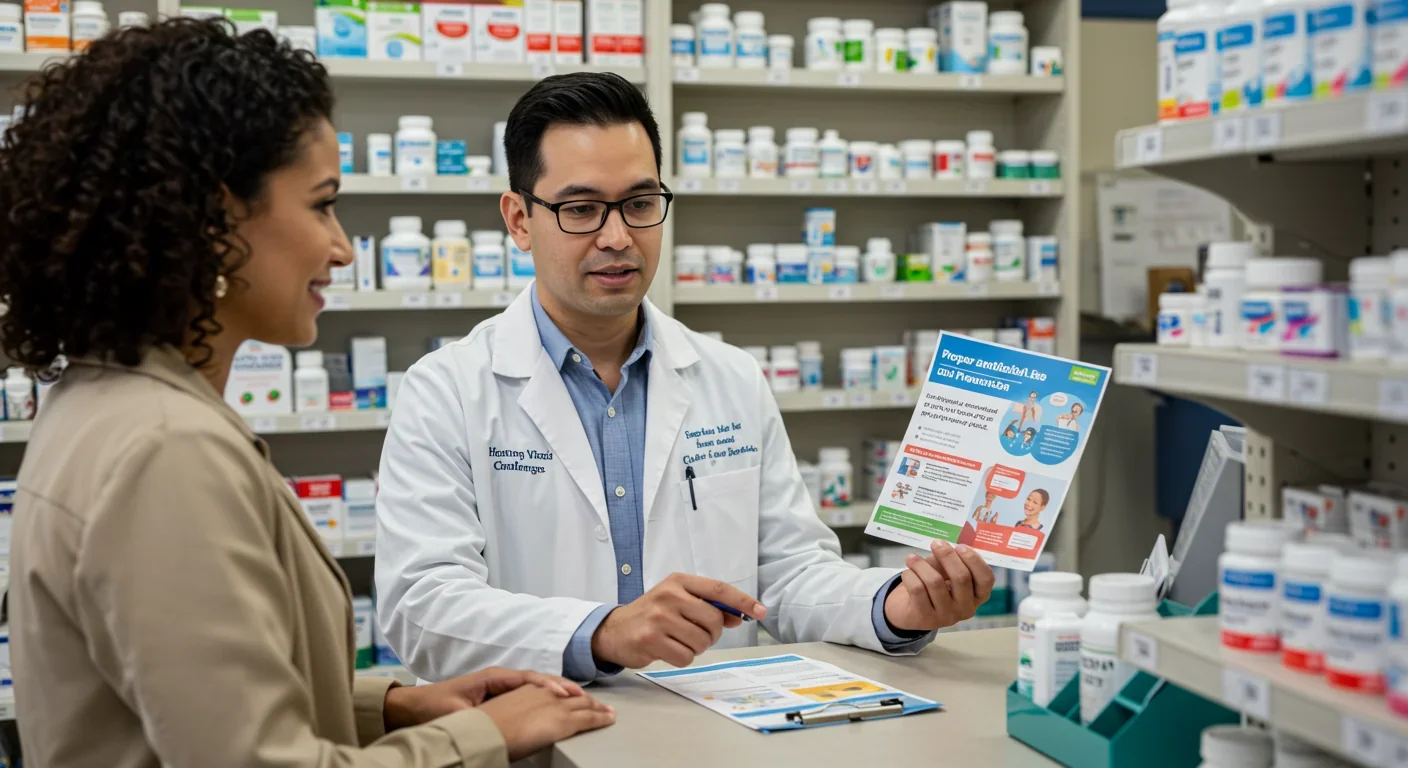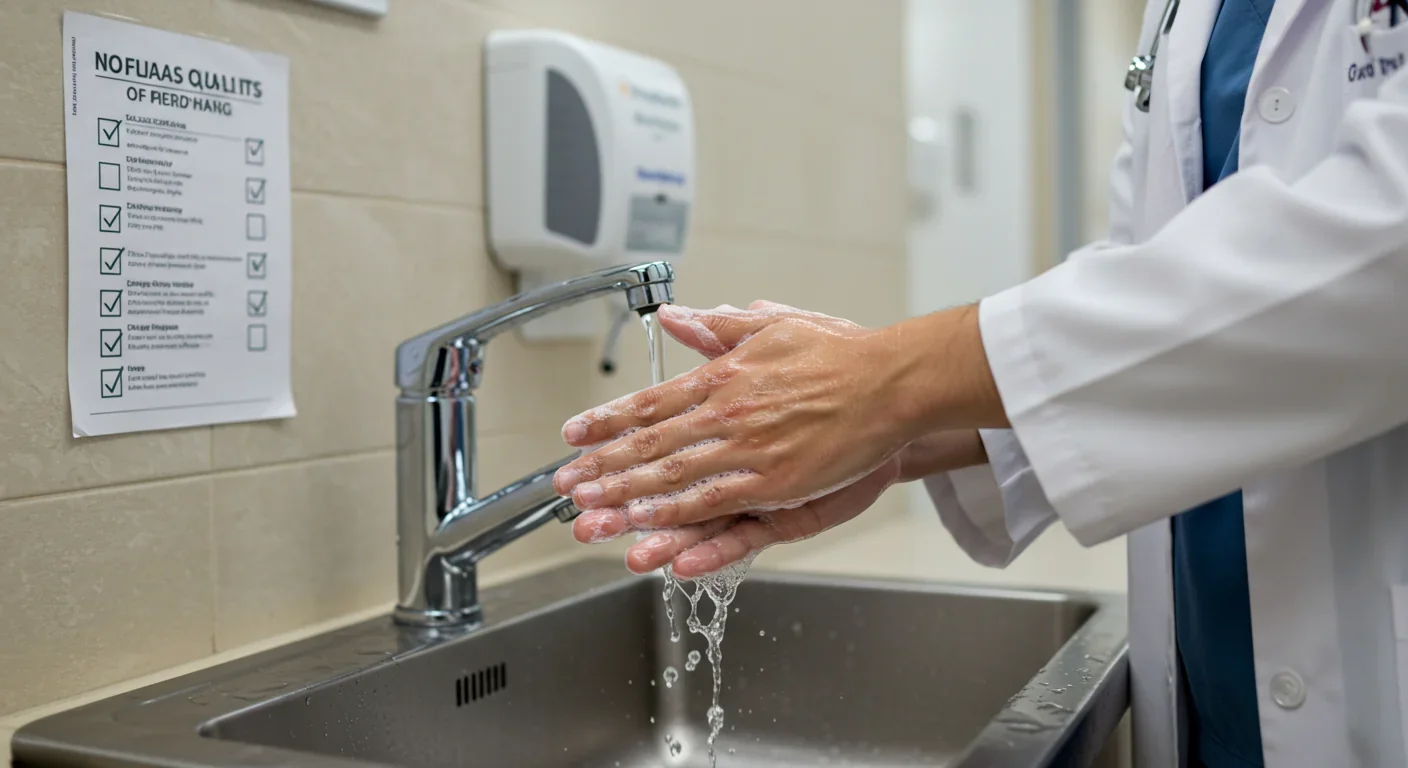Epigenetic Clocks Predict Disease 30 Years Early

TL;DR: Drug-resistant superbugs surged 70% since 2019, but cutting-edge solutions like phage therapy, CRISPR gene editing, and rapid diagnostics offer hope—if we act collectively through better stewardship and global coordination.

In 2019, a patient walks into a clinic with a urinary tract infection, gets a prescription, and feels better in days. Fast forward to 2025, and that same infection might land them in intensive care—not because medicine has regressed, but because the bacteria have evolved faster than our drugs. Between 2019 and 2023, infections from drug-resistant "nightmare bacteria" surged nearly 70% in the United States alone. We're watching evolution happen in real time, and it's winning. But here's the twist: while superbugs learn to dodge our best antibiotics, scientists are fighting back with weapons bacteria never saw coming—from viruses that hunt bacteria to gene-editing tools that disarm resistance itself.
Bacteria don't resist antibiotics out of spite. They do it because we've created the perfect training ground. Every time we take antibiotics, we're running a brutal selection experiment: the bacteria that can survive pass on their tricks to the next generation. The mechanisms are elegantly simple yet devastatingly effective. Some bacteria produce enzymes that slice antibiotics into harmless fragments, like β-lactamase breaking down penicillin. Others modify the drug's target site so antibiotics can't recognize where to attack. Still others build molecular pumps that eject drugs before they can work, or thicken their cell walls so antibiotics can't get in.
What makes this arms race truly terrifying is horizontal gene transfer. Bacteria don't just inherit resistance from their parents—they swap resistance genes like kids trading cards. Through plasmids, chunks of DNA that jump between bacterial species via conjugation and transduction, resistance spreads across entirely different types of bacteria. A gene that evolved in a harmless gut bacterium can suddenly appear in a deadly pathogen. The NDM gene, which produces an enzyme that breaks down carbapenem antibiotics, has spread to multiple bacterial species precisely this way. Cases involving NDM-producing bacteria jumped more than fivefold between 2019 and 2023, from 0.25 to 1.35 per 100,000 people in the U.S.
The pandemic accelerated everything. Antibiotic prescribing rates exceeded 70% in some COVID-19 treatment settings despite bacterial co-infection rates of only 7-15%. All those unnecessary prescriptions created evolutionary pressure cookers. Healthcare systems already strained by COVID-19 saw carbapenem-resistant Acinetobacter baumannii (CRAB) infections increase by 78% and carbapenem-resistant Enterobacteriaceae (CRE) surge by 35% during 2020 alone.
Superbugs used to be a hospital problem. Patients with weakened immune systems, invasive devices, and prolonged antibiotic exposure were the primary victims. That's changing. Community spread of drug-resistant bacteria is making routine infections harder to treat, according to CDC epidemiologist Dr. Maroya Walters. Urinary tract infections that once cleared up with a week of pills now sometimes require intravenous antibiotics administered in hospitals.
The economic burden is staggering. In transplant patients alone, carbapenem-resistant infections increase mortality risk by 71%. For liver transplant recipients infected with carbapenem-resistant Klebsiella pneumoniae, the death rate reaches approximately 82%. For kidney transplant patients, it's around 56%. These aren't abstract statistics—they represent thousands of deaths from infections that would have been treatable just decades ago.
The threat extends beyond individual patients. When first-line antibiotics fail, doctors must use more expensive, more toxic alternatives. Hospital stays lengthen. Surgeries that rely on effective antibiotics—joint replacements, cancer treatment, organ transplants—become riskier. Some procedures might eventually become too dangerous to perform if resistance continues unchecked.
You can't fight what you can't identify. Traditional bacterial culture methods take days to reveal which antibiotic will work, forcing doctors to prescribe broad-spectrum drugs while they wait. This guesswork contributes to resistance. But rapid diagnostic technologies are changing the game.
Modern molecular diagnostics can identify MRSA in hours rather than days or weeks. Newer platforms use genomic sequencing to detect resistance genes directly from patient samples, bypassing the need to grow bacteria in culture entirely. Some experimental systems employ artificial intelligence to analyze bacterial behavior patterns, predicting resistance profiles from microscopic images.
The Accelerate PhenoTest system, for instance, combines fluorescence microscopy with machine learning to identify bacteria and determine antibiotic susceptibility in about seven hours—a process that traditionally takes two to three days. Getting the right antibiotic to the right patient faster saves lives and reduces unnecessary broad-spectrum prescribing that drives resistance.
These tools work best when coupled with robust surveillance. The CDC tracks resistance patterns through the National Healthcare Safety Network, but inconsistent testing and reporting across states means actual numbers are likely higher than reported. Many hospitals lack capacity to test for genetic resistance markers. Building that infrastructure is critical for understanding where resistance is spreading and deploying interventions.

For decades, pharmaceutical companies largely abandoned antibiotic development. The business model doesn't work—antibiotics cure infections quickly, so they're not as profitable as drugs people take for life. But the crisis has sparked innovation in unexpected directions.
Bacteriophage Therapy: Viruses that infect bacteria, called bacteriophages or phages, were used to treat infections before antibiotics existed. The approach fell out of favor in the West after penicillin's discovery but continued in former Soviet states. Now phage therapy is making a comeback worldwide. In Georgia, bandages saturated with bacteriophages against Staphylococcus are commercially available as topical treatments. Researchers are developing both topical and systemic phage therapies for drug-resistant infections.
Phages offer elegant advantages: they're exquisitely specific, targeting only the bacterial species they've evolved to infect, so they don't wipe out beneficial gut bacteria. They evolve alongside bacteria, potentially staying effective even as bacteria develop resistance. And because phages replicate at the infection site, a single dose can theoretically amplify itself. The challenges involve regulatory hurdles, manufacturing consistency, and identifying the right phage for each bacterial strain. But companies and academic centers are actively working to overcome these obstacles.
CRISPR and Gene Editing: What if instead of killing bacteria, we could simply disarm them? CRISPR gene-editing tools can be programmed to target and destroy antibiotic resistance genes, or even make bacteria sensitive to antibiotics again. Researchers are exploring CRISPR-based approaches to slice out resistance plasmids or disable the genes that encode drug-destroying enzymes. While still largely experimental, these strategies could turn bacteria's own genetic adaptability against them.
Combination Therapies: Some of the most promising advances come from using existing drugs more cleverly. Pairing a β-lactam antibiotic with a β-lactamase inhibitor—a molecule that blocks the enzyme bacteria use to break down the antibiotic—can restore effectiveness against resistant strains. Several new combinations are in clinical trials, expanding treatment options for infections that would otherwise be untreatable.
Novel Antibiotic Classes: A few pharmaceutical companies and academic labs are hunting for genuinely new antibiotics that work through mechanisms bacteria haven't encountered before. Teixobactin, discovered in soil bacteria in 2015, attacks bacterial cell walls in a way that makes resistance development extremely difficult. Other candidates target bacterial metabolism or toxin production rather than trying to kill bacteria outright.
Technology alone won't solve antibiotic resistance. We need to use the tools we have more wisely. Antimicrobial stewardship programs (ASPs) in hospitals monitor antibiotic prescribing, promote narrow-spectrum drugs when possible, and ensure patients get the right drug, dose, and duration.
The evidence for stewardship is compelling. Hospitals that adopted standardized hand hygiene checklists, developed by critical-care physician Peter Pronovost in the early 2000s, saw significant reductions in infection rates. When ASPs remained operational during the COVID-19 pandemic, prospective audit and feedback interventions significantly reduced unnecessary antimicrobial use. The flip side: 65% of hospitals reported negative impacts on stewardship activities during the pandemic, contributing to the resistance surge.
The CDC's Core Elements of Hospital Antibiotic Stewardship Programs provide a framework: leadership commitment, accountability, pharmacy expertise, action through interventions, tracking and reporting, and education. But implementation varies widely. Some hospitals have dedicated infectious disease pharmacists reviewing every antibiotic order; others struggle with basic compliance.
Stewardship extends beyond hospitals. Outpatient clinics, nursing homes, veterinary medicine, and agriculture all contribute to resistance. Roughly 80% of antibiotics used in the United States go to livestock—not to treat sick animals, but to promote growth and prevent disease in crowded conditions. This practice creates massive reservoirs of resistant bacteria that can spread to humans through food, water, and environmental contact.
Organ transplant recipients represent an especially vulnerable population where resistance dynamics play out in stark relief. These patients require lifelong immunosuppression to prevent organ rejection, making them exquisitely susceptible to infections. Pre-transplant rectal colonization with extended-spectrum β-lactamase (ESBL)-producing Enterobacteriaceae increases post-transplant infection risk 18-fold.
Donor-derived multidrug-resistant organisms add another layer of complexity. Bacteria from the donor organ can establish infections in the immunosuppressed recipient. This has prompted discussions about routine donor screening and targeted prophylactic antibiotics, but no consensus exists on optimal protocols.
Extended ICU stays, high-dose immunosuppression, and invasive devices like ventilators and catheters create perfect conditions for acquiring resistant infections. The high mortality rates in this population—82% in liver transplant patients with carbapenem-resistant K. pneumoniae bloodstream infections—underscore why rapid diagnostics, novel therapies, and rigorous stewardship matter so much. Every breakthrough that helps transplant patients also points toward strategies for protecting broader populations.

Antibiotic resistance is fundamentally a global problem. Bacteria don't respect borders, and neither do the practices that drive resistance. International travel, trade, and migration spread resistant strains across continents. A patient treated for an infection in India might carry resistant bacteria back to the United States. Produce imported from farms using agricultural antibiotics brings resistant organisms into food systems worldwide.
The WHO has designated multi-drug resistant gonorrhoea as a priority pathogen, with resistance documented in multiple countries. The FAO and WHO work together through Codex Alimentarius to develop international standards for antimicrobial use in agriculture, but implementation varies dramatically by country.
Low- and middle-income countries often face the worst of both worlds: high infectious disease burden requiring antibiotic use, but weak regulatory frameworks allowing over-the-counter antibiotic sales and substandard drugs that expose bacteria to sub-therapeutic doses—perfect conditions for resistance development. Yet these same countries often lead in alternative approaches. Phage therapy centers in Georgia and Poland have decades of clinical experience. Research networks in Asia and Africa are documenting resistance patterns and traditional antimicrobial compounds that pharmaceutical companies overlooked.
Effective global response requires resource sharing, surveillance coordination, and technology transfer. When rapid diagnostics remain too expensive for resource-limited settings, resistance spreads unchecked. When wealthy countries export agricultural practices that promote resistance, everyone suffers the consequences.
The antibiotic resistance crisis might seem too vast for individual action to matter, but collective behavior shapes evolutionary pressure on bacteria.
For patients: Only take antibiotics when truly necessary. Complete the full course as prescribed—stopping early can leave resistant bacteria behind. Don't pressure doctors for antibiotics when you have a viral infection; they won't help. Prevent infections through vaccination, hand washing, and food safety. These simple acts reduce antibiotic need.
For healthcare providers: Embrace rapid diagnostics and stewardship protocols. Use narrow-spectrum antibiotics when possible. Educate patients about why antibiotics won't help their viral cold. Review prescribing patterns and challenge your own habits.
For policymakers: Fund antibiotic research and development through mechanisms that don't rely on sales volume. Strengthen surveillance infrastructure so we know where resistance is spreading. Regulate agricultural antibiotic use. Support global initiatives to improve access to diagnostics and appropriate antibiotics in low-resource settings.
For agricultural producers: Phase out routine antibiotic use for growth promotion. Improve animal husbandry conditions so disease prevention doesn't require constant medication. Consider alternatives like vaccines and probiotics.
The economic incentives need fixing, too. Several countries are experimenting with "push-pull" funding models: governments pay upfront for antibiotic development (the "push"), then guarantee purchases regardless of volume (the "pull"), ensuring companies can profit from developing drugs we hope to use sparingly.
Standing at this crossroads, we face two possible futures. In one, resistance continues spreading faster than our ability to respond. Routine surgeries become life-threatening gambles. Childbirth, organ transplants, and cancer chemotherapy—all procedures that rely on antibiotics to prevent infection—grow increasingly risky. We slide backward toward a pre-antibiotic world where minor injuries can kill.
In the other future, we rise to the challenge. Rapid diagnostics become standard, so patients get the right antibiotic immediately, reducing both treatment failures and unnecessary use. Phage therapy and CRISPR-based interventions join the arsenal, providing alternatives when traditional antibiotics fail. Stewardship programs span healthcare, agriculture, and global coordination. Novel antibiotics developed through reformed economic incentives flow into clinical use. Surveillance networks spot emerging resistance patterns early, allowing rapid response.
We're not passive observers in this story. The research momentum is real. Scientists are characterizing resistance mechanisms at the genomic level, revealing targets for intervention. Communities of practice are sharing stewardship strategies that work in diverse healthcare settings. Pharmaceutical companies, universities, and governments are collaborating in unprecedented ways.
The bacteria are evolving, yes, but so are we—and we have science, coordination, and intentionality on our side. Superbugs may be on the rise, but we're learning to fight smarter, not just harder. The outcome isn't predetermined. It depends on the choices we make collectively over the next decade: whether we invest in innovation, implement known solutions, and coordinate globally. The crisis is real, but so is our capacity to respond. What we do now determines which future we inhabit.

Recent breakthroughs in fusion technology—including 351,000-gauss magnetic fields, AI-driven plasma diagnostics, and net energy gain at the National Ignition Facility—are transforming fusion propulsion from science fiction to engineering frontier. Scientists now have a realistic pathway to accelerate spacecraft to 10% of light speed, enabling a 43-year journey to Alpha Centauri. While challenges remain in miniaturization, neutron management, and sustained operation, the physics barriers have ...

Epigenetic clocks measure DNA methylation patterns to calculate biological age, which predicts disease risk up to 30 years before symptoms appear. Landmark studies show that accelerated epigenetic aging forecasts cardiovascular disease, diabetes, and neurodegeneration with remarkable accuracy. Lifestyle interventions—Mediterranean diet, structured exercise, quality sleep, stress management—can measurably reverse biological aging, reducing epigenetic age by 1-2 years within months. Commercial ...

Data centers consumed 415 terawatt-hours of electricity in 2024 and will nearly double that by 2030, driven by AI's insatiable energy appetite. Despite tech giants' renewable pledges, actual emissions are up to 662% higher than reported due to accounting loopholes. A digital pollution tax—similar to Europe's carbon border tariff—could finally force the industry to invest in efficiency technologies like liquid cooling, waste heat recovery, and time-matched renewable power, transforming volunta...

Humans are hardwired to see invisible agents—gods, ghosts, conspiracies—thanks to the Hyperactive Agency Detection Device (HADD), an evolutionary survival mechanism that favored false alarms over fatal misses. This cognitive bias, rooted in brain regions like the temporoparietal junction and medial prefrontal cortex, generates religious beliefs, animistic worldviews, and conspiracy theories across all cultures. Understanding HADD doesn't eliminate belief, but it helps us recognize when our pa...

The bombardier beetle has perfected a chemical defense system that human engineers are still trying to replicate: a two-chamber micro-combustion engine that mixes hydroquinone and hydrogen peroxide to create explosive 100°C sprays at up to 500 pulses per second, aimed with 270-degree precision. This tiny insect's biochemical marvel is inspiring revolutionary technologies in aerospace propulsion, pharmaceutical delivery, and fire suppression. By 2030, beetle-inspired systems could position sat...

The U.S. faces a catastrophic care worker shortage driven by poverty-level wages, overwhelming burnout, and systemic undervaluation. With 99% of nursing homes hiring and 9.7 million openings projected by 2034, the crisis threatens patient safety, family stability, and economic productivity. Evidence-based solutions—wage reforms, streamlined training, technology integration, and policy enforcement—exist and work, but require sustained political will and cultural recognition that caregiving is ...

Every major AI model was trained on copyrighted text scraped without permission, triggering billion-dollar lawsuits and forcing a reckoning between innovation and creator rights. The future depends on finding balance between transformative AI development and fair compensation for the people whose work fuels it.